Modafinil for Cognitive Enhancement: A Biohacker’s Guide
Introduction: Modafinil (Provigil®) is a wakefulness-promoting compound originally developed for narcolepsy but embraced by biohackers as a “smart drug.” It’s prized for boosting alertness, focus, and productivity without the jittery rush of typical stimulants. This guide provides a comprehensive look at modafinil from both underground anecdotal insights and scientific research. We’ll explore how it works, its benefits and risks, strategies for dosing and cycling, nootropic stacks, comparisons to similar substances, self-tracking tips, legal considerations, and techniques to achieve flow-state productivity. The goal is an evidence-informed, yet practical handbook for intelligent lay readers looking to optimize cognitive performance safely and effectively.
 Mechanism of Action (How Modafinil Works)
Mechanism of Action (How Modafinil Works)
Modafinil’s exact mechanism is complex and multi-faceted, but in simple terms it tweaks the brain’s wakefulness circuits and neurotransmitters:
Dopamine & Catecholamines
Modafinil weakly inhibits the dopamine transporter (DAT), causing a1 mild increase in extracellular dopamine. This boost in dopamine (and downstream norepinephrine) in key areas like the prefrontal cortex contributes to greater alertness and focus. Unlike Adderall or cocaine, modafinil’s dopamine elevation is modest, which is why it has a lower risk of euphoria and addiction2. It also indirectly raises norepinephrine and serotonin levels in certain brain regions, likely as a downstream effect of dopamine uptake inhibition3.
Orexin (Hypocretin) & Histamine
Uniquely, modafinil activates the orexin system in the hypothalamus2. Orexin neurons are the brain’s “wake-up switch,” strongly promoting arousal and alertness. By stimulating orexin release (and histamine along with it), modafinil essentially signals the body to stay awake. This is why it’s classified as a eugeroic (good arousal agent) rather than a classic psychostimulant. The result is a state of wakefulness that feels “natural” (not wired or speedy) for most users.
Glutamate & GABA
Research suggests modafinil increases glutamate (an excitatory neurotransmitter) and reduces GABA (an inhibitory neurotransmitter) in some regions4. This shift further tilts the brain toward an alert, engaged state. Users often describe a sense of “brightened” mental clarity.
Low Peripheral Overstimulation
Notably, modafinil has minimal effect on peripheral adrenaline, so heart rate and blood pressure are less affected compared to amphetamines. It’s selective for the brain’s arousal networks, which helps avoid the racing pulse or sweaty palms typical of other stimulants. It also lacks significant affinity for adenosine receptors (caffeine’s target), so it promotes wakefulness in a distinct pharmacological manner.
In summary, modafinil acts on multiple fronts to keep you awake and mentally engaged: a gentle uptick in dopamine/norepinephrine, activation of orexin-driven wake circuits, and enhanced excitatory signaling. The combined effect is increased alertness and concentration without the pronounced “high” or crash of stronger stimulants2. (Many biohackers quip that modafinil makes you feel awake in a normal way, as if you’re just your best well-rested self – only for a much longer span.)
Visual Aid: Neurotransmitter Impact – Modafinil is a racemic mixture of two mirror-image molecules, R- and S-modafinil. The R-enantiomer (armodafinil) is more pharmacologically active5. The diagram below shows the structure of both enantiomers.
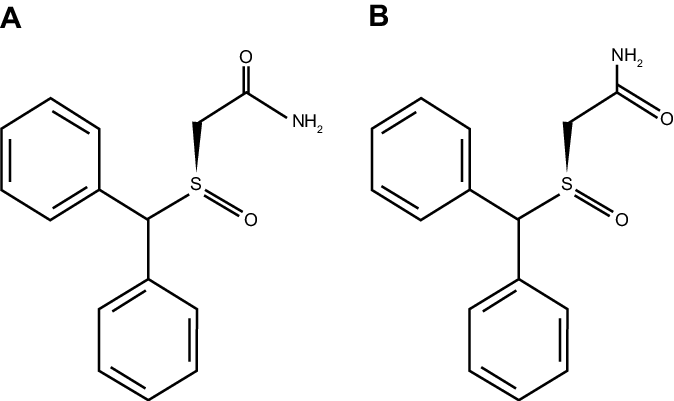
Benefits of Modafinil Use (Short-Term & Long-Term)
Modafinil’s popularity among students, entrepreneurs, and self-optimizers stems from its reputation as a reliable cognitive enhancer. But what benefits are proven by evidence versus merely anecdotal? We break down the short-term effects you can expect, and consider long-term use implications.
 Short-Term Benefits (Acute Effects)
Short-Term Benefits (Acute Effects)
Wakefulness and Stamina
The most clear-cut benefit. Modafinil will keep a sleep-deprived person awake and functional nearly as well as traditional stimulants, with research on pilots and military personnel confirming improved alertness during extended wakefulness6. Even in a rested state, users report an “always on” feeling – no yawning through that morning meeting or afternoon slump. This makes it invaluable for shift workers or anyone facing an all-nighter. Anecdotally, many biohackers use modafinil as a fatigue-proof workhorse, allowing them to maintain productivity for 10–12+ hours straight.
Enhanced Focus and Attention
Modafinil can heighten your concentration span. Studies find that on tasks requiring complex, sustained attention, modafinil consistently improves performance7. In plain terms, it’s easier to lock onto a single task and tune out distractions. Biohackers often rave about this laser-focus: mundane work becomes absorbing, and procrastination fades. One user on Reddit remarked, “Modafinil silences the background noise in my brain – I just zero in on my to-do list and execute.” It’s not a guaranteed creativity booster (some say it can make you too tunnel-visioned), but for analytical or detail-oriented work it’s a game-changer.
Cognitive Function and Memory
A landmark Oxford review noted modafinil most reliably boosts executive functions – such as decision-making, planning, and adapting to new information7. Simpler memory tasks or creativity tests showed little change on modafinil in healthy volunteers8. In practice, this means you might not suddenly recall random facts better, but you may be able to juggle complex problems more effectively. Working memory improvements are inconsistent in research, but some users do report a subjective memory boost (“sticky” thoughts). There’s also evidence that in people with baseline cognitive impairments (e.g., recovering from depression), modafinil can improve memory performance9. Overall, expect sharper mental acuity on challenging tasks, but don’t expect NZT-48 from Limitless – you won’t magically become a genius overnight.
Motivation and Productivity
A widely reported “off-label” benefit is enhanced motivation or drive. Modafinil seems to increase one’s willingness to tackle tasks – possibly due to the dopamine elevation in motivation circuits (dopamine in the nucleus accumbens is linked to reward-driven behavior). There isn’t a specific clinical measure of “motivation” modafinil definitively improves, but anecdotally this is one of its most cherished effects. Users often describe a reduction in procrastination and an almost compulsive inclination to get things done. For instance, community members on Longecity have noted finally plowing through tedious work that they’d been avoiding for weeks, crediting modafinil for that sustained push. It’s as if the activation energy required to start tasks is lowered. This motivational boost, combined with focus, often results in dramatically higher productivity on modafinil days – the classic “crushing my to-do list” experience.
Mood and Well-being
Modafinil is not a euphoric drug, but it can subtly influence mood. Many users report a light uplift in mood or a sense of “brightened” mental state (likely because being alert and productive can feel good). Scientifically, modafinil has been studied as an adjunct in depression; a meta-analysis found it improved fatigue and mood in patients with depression10. In healthy individuals, mood effects are mixed – one trial with 400 mg noted increased positive mood and increased anxiety11. On 50–200 mg doses, most biohackers say they feel optimistic, calm, and tireless. However, a minority experience irritability or emotional blunting. Important: Modafinil can slightly suppress appetite for some, which indirectly might sour mood if you don’t eat – so remember to have meals even if you don’t feel hungry, to keep mood and energy stable.

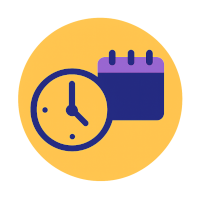 Long-Term Use Considerations
Long-Term Use Considerations
What about chronic use over months or years? Here we have to distinguish anecdote from limited research:
- Sustained Cognitive Performance: Unlike many stimulants, modafinil’s effects tend to persist with ongoing use without dramatic tolerance build-up for most people. Some long-term users (e.g., those with narcolepsy or shift-work disorder) have taken it daily for years and report stable efficacy. Clinical studies up to 40 weeks found no significant tolerance development12. This suggests that modafinil can remain effective at the same dose over the long term – a huge plus compared to caffeine or Adderall where doses often must increase. That said, some biohackers do report diminished effects after prolonged daily use (often described as “the first few times were magical, then it felt normal”).3 It’s possible that the noticeable boost fades simply because one’s baseline expectations change. One community survey noted if tolerance occurs, it tends to happen within the first few weeks13. To err on the side of caution, many users adopt cycling strategies (see next section) to preserve the “wow” effect.
- Neurotoxicity & Health: There’s no evidence that modafinil, even with long-term use, causes neurotoxicity or cognitive decline. In fact, it’s generally considered quite safe; it doesn’t seem to fry your dopamine system or significantly downregulate receptors in the way potent stimulants might. Longitudinal data is limited, but so far no serious cognitive detriments have been linked to extended modafinil use in healthy adults. Physically, it’s well tolerated (liver metabolism is involved, but no liver damage has been observed at normal doses). Some animal studies at massive doses raised theoretical concerns (e.g., affecting plasticity in rodents), but those don’t clearly translate to responsible human dosages. The main health consideration is making sure chronic use doesn’t mask an underlying need for sleep – i.e., don’t use modafinil to routinely sleep 4 hours a night forever, or you will eventually pay a health toll. In summary, current evidence and user experience suggest modafinil can be used for long periods with minimal adverse effects, provided it’s used respectfully and not as a total sleep replacement.
- Tolerance & Dependence: One of modafinil’s attractive features is the relative lack of dependency and withdrawal. It’s Schedule IV (low abuse potential) for a reason. Users don’t report cravings or compulsive dose escalation. Tolerance, if it occurs, usually manifests as the alertness boost feeling less pronounced, not as a need to dose higher to function. Moreover, stopping modafinil doesn’t crash you into a deficit state; there’s no significant withdrawal syndrome beyond potentially feeling extra tired the next day as your body repays any sleep debt14. This is in contrast to caffeine or amphetamines, where stopping can cause noticeable “below baseline” fatigue or depression. One biohacker summarized it well: “With coffee I need my fix or I underperform; with modafinil I perform above baseline, but without it I’m just back to normal.” Nonetheless, psychological dependency is possible – if you start believing you can’t perform without it, that can become a crutch. It’s wise to take regular drug-free days to prove to yourself that you can still function normally off modafinil (and indeed you will, aside from being a bit sleepier).
- Anecdotal Long-Term Effects: User reports after extended use vary. Many long-term biohackers are very positive: they credit modafinil for promotions at work, acing difficult exams, or powering entrepreneurial projects. They often say it allowed them to implement good habits (exercise, studying, etc.) more consistently, which continued to benefit them even off the drug. On the flip side, a few veteran users mention subtler downsides: blunted spontaneous creativity (e.g., “I can grind tasks but my out-of-the-box thinking suffered”), or a mild constant tension (perhaps from always being in go-mode). Some choose to reserve modafinil for specific scenarios rather than daily use, to keep its effects special and avoid any potential long-term mental strain. Overall, the community consensus is that responsible use yields high long-term rewards (sustained productivity, better career/academic outcomes) with minimal downsides, whereas abuse or lack of sleep can lead to burnout.
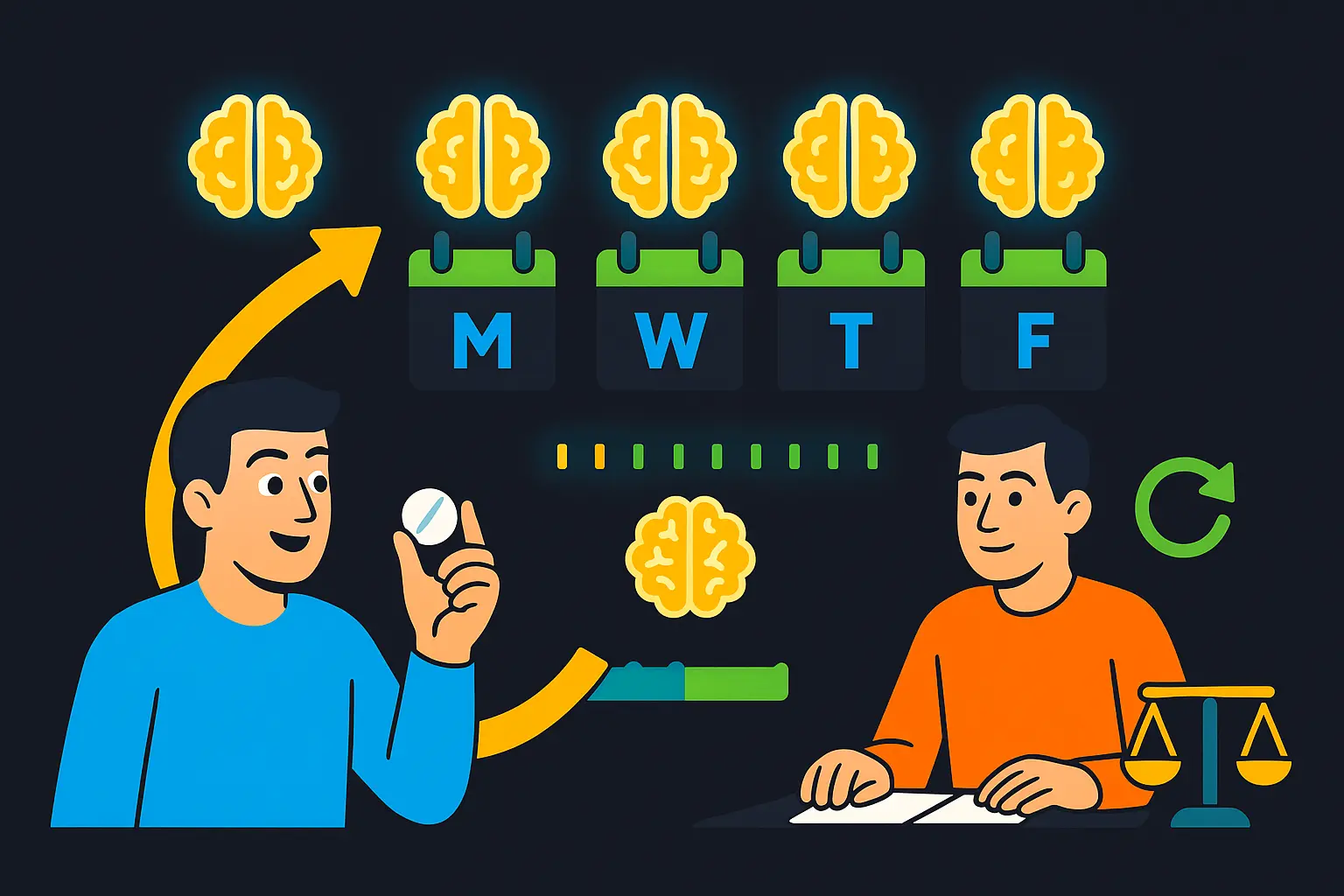
Evidence vs. Anecdotal: Benefits Table
The table below summarizes key cognitive benefits, contrasting scientific evidence with anecdotal reports from user communities:
| Cognitive Domain | Scientific Evidence (studies) | Community Anecdotes (user reports) |
|---|---|---|
| Wakefulness & Alertness | Strong evidence: Marked improvement in alertness and vigilance, especially in sleep-deprived6 individuals. Medically proven to sustain wakefulness in narcolepsy and shift-work fatigue. | Universal anecdotal agreement: “Feels like I’m fully awake for the first time.” Users easily stay productive for 12+ hours. Commonly used to pull all-nighters or prevent afternoon energy crashes. |
| Focus & Concentration | Evidence of enhanced attention: Modafinil consistently improves focus7 on complex or lengthy tasks. Not much effect on simple tasks, but it aids executive function and attentional control. | “Laser focus” reports: Users describe tunnel-vision concentration. Mundane or difficult tasks become engrossing. Many note drastically reduced distractibility – e.g., procrastinating on Reddit/YouTube drops to near zero while working. |
| Memory (learning, recall) | Mixed findings: Little to no improvement in basic working memory or creativity in healthy, non-sleep-deprived subjects8. Some enhancements seen in specific memory tests for certain populations or when sleep-deprived. | Subjective clarity: Many say modafinil makes their thoughts “stick” better and aids learning complicated material. Students report easier recall during exams. Others feel memory is unchanged but note improved working memory when juggling tasks. |
| Motivation & Drive | Indirect evidence: Not formally measured in trials, but improved executive function and dopamine activity suggest increased task motivation. Some studies note higher task engagement and enjoyment on modafinil9. | High motivation is a common theme: “I actually want to work.” Users often tackle long-postponed chores or deep work with enthusiasm. Modafinil days are described as extremely productive, with a relentless urge to complete tasks and meet goals. |
| Mood & Well-being | Subtle effects: Generally no significant mood boost in healthy volunteers (most studies show neutral mood impact)15. However, clinical use in depression shows reduced fatigue and slight mood improvement10. One study noted mood elevation with increased anxiety at 400 mg11. | Varies by person: Many biohackers feel a mild positive mood or confidence uplift (“in a good headspace, ready to conquer the day”). Some report feeling emotionally flat or overly task-driven. A few experience edginess or impatience, especially if combined with other stimulants. Overall, mood effects are secondary to the focus/energy benefits. |
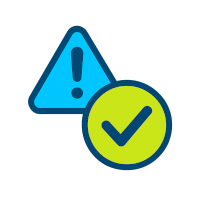 Risks and Side Effects (and How to Mitigate Them)
Risks and Side Effects (and How to Mitigate Them)
Like any potent bioactive compound, modafinil comes with possible side effects and risks. The good news is that at standard dosages (50–200 mg), serious adverse effects are rare, and most people find it very tolerable. Nonetheless, it’s essential to know what could go wrong and how to minimize issues.
Headache
~10 % of users report headaches on modafinil. These range from mild tension headaches to more throbbing aches. Cause: possibly slight dehydration, increased brain activity burning through more nutrients, or modafinil’s effect on neurochemicals like glutamate. Mitigation: Stay hydrated – modafinil is subtly dehydrating. Drink water throughout the day. Also, ensure you’re eating (low blood sugar or mineral deficiencies can trigger headaches). Many users swear by supplementing choline (e.g., Alpha-GPC or CDP-Choline) to prevent “moda headaches,” especially if stacking with racetams; the theory is modafinil might deplete choline in the brain for some, so adding it back helps. Magnesium in the evenings can also relax head and neck muscles (and supports overall neural function).
Insomnia
If you take modafinil too late in the day, you might be wide awake at bedtime. It has a long half-life (~15 hours)17. Many users report that a 7 AM dose still leaves them a bit stimulated come 10 PM. Mitigation: Timing is everything. Take modafinil early morning (7–9 AM) whenever possible. Avoid dosing in the afternoon, or you’ll likely disrupt your sleep. In case you do find yourself unable to sleep on it, consider sleep hygiene tactics: blue-light filters at night, calming tea or magnesium, and possibly melatonin to nudge your brain toward sleep. Anecdotally, some biohackers use low-dose melatonin or the supplement glycine at night to counteract modafinil’s lingering alertness. Also, on days you use modafinil, try to have a wind-down routine – the drug can make your mind race with ideas; journaling them out or doing light reading can help ease into sleep. Never double-dose or take modafinil late thinking “I’ll just push through the night” frequently – that’s a recipe for eventual burnout.
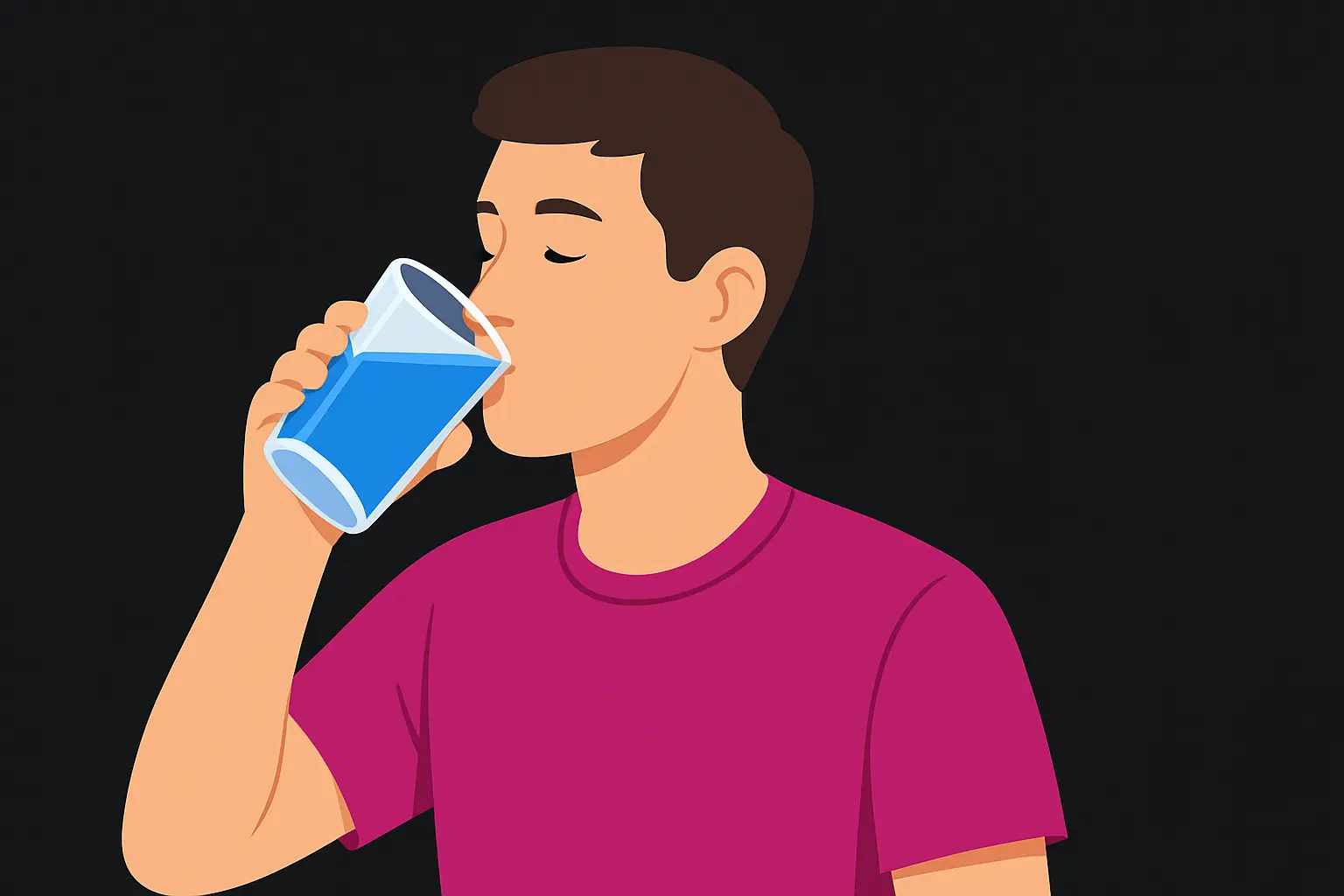
Appetite Suppression
Modafinil can diminish hunger for some (it’s far less anorectic than Adderall but a mild effect is noted). You might realize you powered through the day on a coffee and a protein bar without feeling hungry. Mitigation: Don’t forget to eat nutritious meals even if you aren’t starving. Set reminders to grab lunch. Favor foods rich in protein and healthy fats to keep your energy up. Skipping meals can lead to headaches, irritability, or a sudden energy crash when the drug wears off.
Anxiety or Jitters
About 5–10 % of users report increased anxiety, nervousness, or a sort of “wired” feeling. Modafinil’s clean stimulation can still induce overstimulation in sensitive individuals, especially at higher doses (200 mg+) or when combined with other stimulants. Mitigation: If prone to anxiety, start with lower doses (50–100 mg) to gauge your reaction. Avoid excess caffeine on modafinil – while many do combine them, it can be overkill if you’re sensitive. Consider adding L-Theanine (~200 mg) or adaptogens like ashwagandha or Rhodiola to smooth anxiety. Deep breathing exercises or short meditation breaks during the day can help keep your sympathetic nervous system calm. Remember, forgetting to eat or hydrate can also exacerbate jitters.
Dizziness or Nausea
A smaller fraction experience dizziness, nausea, or gastrointestinal discomfort. These effects are generally transient. Taking modafinil on an empty stomach can sometimes cause mild nausea. Mitigation: Try taking it with food (a light breakfast) if you get queasy. Ensure you’re not over-caffeinating, as caffeine can upset the stomach or intensify dizziness. If dizziness occurs, check for low blood sugar or blood pressure – hydration and a pinch of salt can help if pressure dips.
Dehydration & Dry Mouth
You might not notice it, but modafinil can cause you to go hours without drinking. Some users get a dry mouth or simply forget to sip water, contributing to headaches and general malaise. Mitigation: Keep a water bottle visible on your desk, use electrolytes (sea salt or sports drinks), and chew sugar-free gum to remind yourself to hydrate.
Rare but Serious Risks
Allergic Reactions / Rashes
Modafinil has a black-box warning for rare severe skin reactions like Stevens–Johnson Syndrome (SJS). This is extremely uncommon, but a few cases have been reported18. It usually appears in the first few weeks of use as a feverish rash with blistering. Mitigation: It’s exceedingly rare (a few cases per million prescriptions), but if you ever develop an unexplained rash, hives, or skin peeling after starting modafinil, discontinue immediately and see a doctor.
Blood Pressure & Heart
Modafinil can slightly raise blood pressure and heart rate due to its adrenergic effects, though not as strongly as classic stimulants. If you have uncontrolled hypertension or heart problems, use modafinil only under medical supervision. Mitigation: Monitor your blood pressure on modafinil—many fitness trackers will show a ~5–10 bpm increase. Regular exercise, magnesium supplementation, and avoiding other stimulants can keep cardiovascular metrics in check. If you experience chest pain, rapid heartbeat (> 120 bpm resting), or blood pressure spikes, stop use and consult a physician.
Psychiatric Effects
In susceptible individuals, stimulants can trigger anxiety, mania, or psychosis. Modafinil has a low incidence of such effects, but there are rare reports of hallucinations or mania in people with underlying psychiatric conditions. Mitigation: If you have bipolar disorder or a history of psychosis, be very cautious—modafinil might precipitate mania or worsen symptoms19. Discontinue at the first sign of intense anxiety, paranoia, or other mental-health changes.
Over-reliance and Overwork
Modafinil can enable workaholism: if you consistently rely on it to push through and skimp on sleep, you can accumulate sleep deprivation that no drug can fully fix. Mitigation: Treat modafinil as a tool, not a crutch. Prioritize sleep and recovery. Schedule off-days—both off modafinil and off work—to recharge. As one biohacker cautioned, “Respect the drug—just because you can work 20 hours doesn’t mean you always should.”
 User Strategies for Minimizing Side Effects
User Strategies for Minimizing Side Effects
The biohacking community has amassed practical tips to get the most out of modafinil with minimal downsides. Here are some top suggestions from experienced users:
Start Low & Titrate
If you’re new, consider starting with 50 mg (half a pill) to see how you react. Many find 50–100 mg is sufficient for a noticeable boost with even fewer side effects. You can then adjust upwards if needed. More is not always better; some actually report 200 mg can make them more jittery or unfocused than 100 mg.
Take Days Off (“Pulse” Use)
Rather than using modafinil every single day, most veteran biohackers use it more sparingly – e.g. 2–3 times a week on their most demanding days. This prevents tolerance and ensures you’re not chronically sleep-deprived. A common practice is weekdays on, weekends off (or vice versa for some shift workers). One Reddit user advised: “If you take it daily, take a day or two off a week. Don’t overdo it – allow it to remain the powerful substance it is... make sure you get sleep regularly, drink water, eat well, exercise and take your vitamins”20.
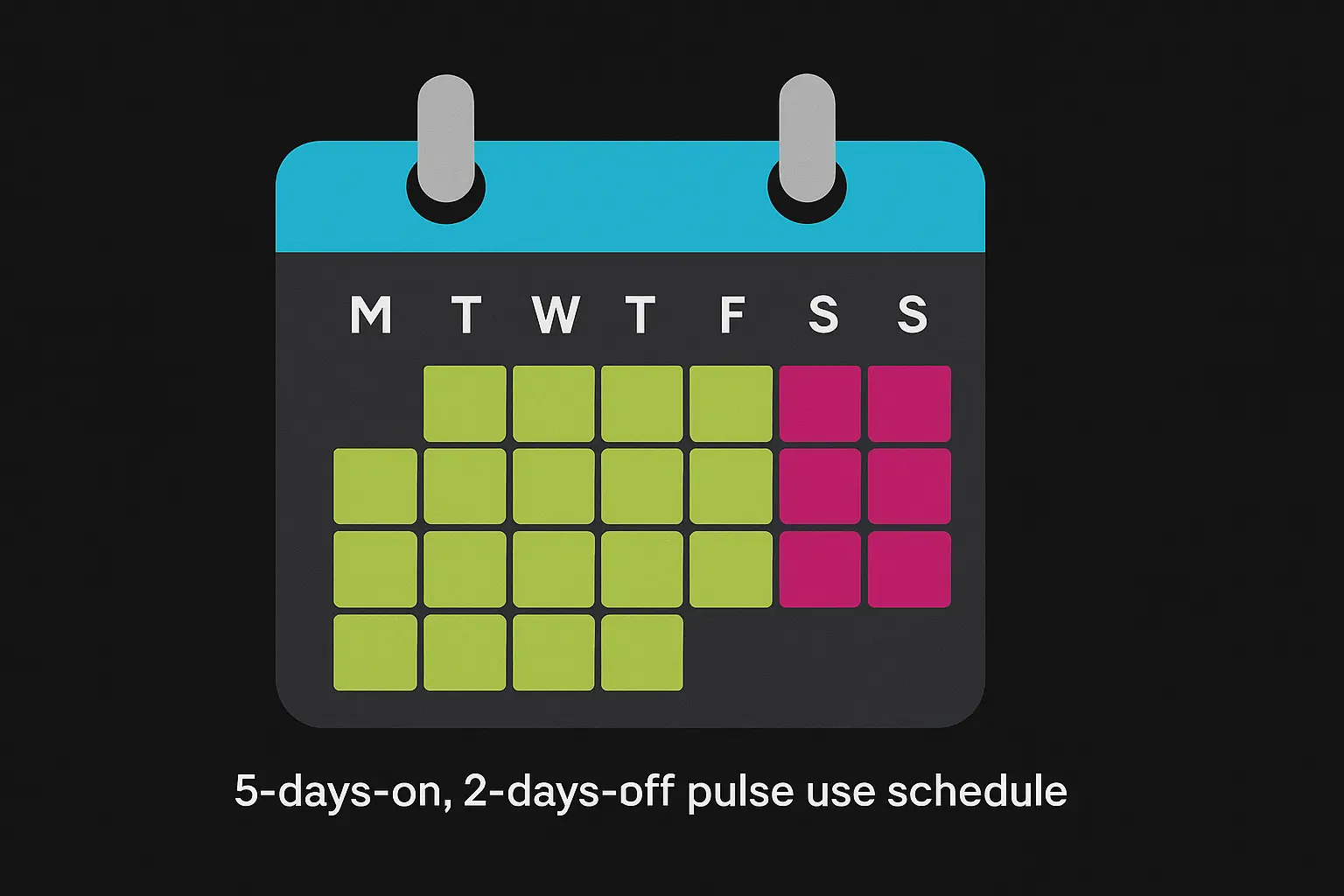
Supplement Supports
Some stacks specifically help mitigate side effects. Magnesium at night (200–400 mg of magnesium glycinate) is popular to promote relaxation and muscle recovery – users say it helps prevent tension headaches and improves sleep quality. Potassium (e.g., a banana or electrolyte mix) can help with occasional muscle tightness. Choline sources (Alpha-GPC, Citicoline) can ward off headaches and support memory, especially if stacking racetams. L-Theanine (100–200 mg) can smooth anxiety. Many pair modafinil with a basic nootropic regimen: a multivitamin, fish oil, magnesium, and a cholinergic.
Listen to Your Body
If modafinil makes you feel truly off – e.g., heart pounding uncomfortably, severe anxiety, or you’re just “not yourself” in a bad way – stop or lower the dose. A small subset of people simply don’t tolerate it well, and that’s okay. No biohack is worth sacrificing your peace of mind.
Overall, modafinil’s side effect profile is mild for most, especially compared to traditional psychostimulants. Most users experience no side effects or very manageable ones like slight dry mouth or reduced appetite. By starting with conservative doses, hydrating, maintaining good sleep hygiene, and paying attention to nutrition, you can often prevent common side effects entirely. Treat modafinil as one component of a healthy performance toolkit – not a magic fix that allows you to neglect your health.
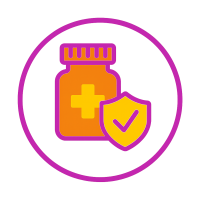 Dosage Protocols, Cycling, and Tolerance Management
Dosage Protocols, Cycling, and Tolerance Management
Dosage Guidelines:
Modafinil is typically sold in 100 mg and 200 mg tablets (as a prescription drug). The standard prescribed dose for conditions like narcolepsy is 200 mg once in the morning21. For cognitive enhancement in healthy individuals, effective doses generally range from 50 mg up to 200 mg8. Here’s how different doses compare:
- 50 mg (Quarter Tablet): Often considered a “microdose” or starter dose. Many biohackers find 50 mg gives a subtle boost – a gentle nudge in wakefulness with minimal side effects. This can be great for first-timers or for days when you just need a slight edge (akin to a strong cup of coffee). Some also use 50 mg in the afternoon if they took 100 mg in the morning and need a later boost – though caution with afternoon dosing and potential insomnia.
- 100 mg (Half Tablet): A common sweet spot. At 100 mg, most people feel noticeable alertness and focus, yet side effects (anxiety, etc.) are still low for the majority. It’s roughly equivalent to a very large cup of coffee in wakefulness, but “cleaner.” Many daily users with prescriptions actually stick to 100 mg/day for maintenance.
- 200 mg (Full Tablet): The max recommended daily dose for off-label use. 200 mg typically produces pronounced wakefulness, intense focus, and high motivation. Most people handle it well, but in some it can produce more jaw tension, anxiety, or irritability (dose-dependent effects). It’s wise to work up to 200 mg rather than start there, to see how you react. For those who tolerate it, 200 mg can be a powerhouse on critically demanding days (big exam, project deadline, transatlantic flight etc.). Do not exceed 200 mg unless under medical direction – higher doses (300–400 mg) haven’t shown much more benefit but do increase risk of adverse effects significantly.
- Armodafinil (150 mg): Armodafinil (the pure R-enantiomer) is typically prescribed at 150 mg which is roughly equivalent in effect to 200 mg modafinil. So if you ever use armodafinil tablets, know the dosing is a bit different by weight (150 mg armodafinil ≈ 200 mg modafinil in potency). Some find armodafinil hits a bit quicker and lasts longer (a slightly longer half-life), but the practical differences are minor. Dose timing and cycling would be similar.
Administration Tips:
Take modafinil with water right after waking. It kicks in about 30–60 minutes later (faster on empty stomach). If you need it even faster, some put the pill under the tongue to dissolve (it has a bitter taste, fair warning) – sublingual use can speed onset a bit. Avoid taking it in the late morning or afternoon unless you intentionally want to be up late. If your schedule is unusual (e.g., night-shift), adjust dosing such that you take it at the beginning of your awake period. It’s fine to take with or without food, but a light meal can ease any stomach sensitivity.
Cycling Best Practices:
Should you take modafinil every day? Most biohackers would say no – it’s best used on-demand for peak performance days. Here are some common cycling strategies:
- 1–2 days on, 1 day off: e.g. use modafinil on Monday and Tuesday, then abstain Wednesday to recharge and ensure you sleep well, then maybe on again Thurs, off Fri, etc. This ensures you don’t build any psychological reliance and gives your neurotransmitters a chance to normalize periodically.
- Weekdays on, Weekends off: If you’re using modafinil primarily for work or study, a popular approach is to take it during the workweek and skip on the weekends. This way you catch up on sleep on Saturday/Sunday if needed. Many report this schedule protects against tolerance – by Monday after a weekend off, modafinil’s effects feel just as strong.9
- Event-based use: Some only use modafinil for specific situations: e.g. exam days, major meetings or coding sprints, travel (to combat jetlag), or days you expect extreme workloads. This could mean using it only a few times a month. The less frequently you use it, the more special each experience tends to be. Tolerance is virtually nonexistent in this case, and you truly treat modafinil as a powerful ace up your sleeve.
- Rotating Nootropics: Another advanced tactic is rotating modafinil with other cognitive enhancers to avoid using any single one too often. For example, Monday take modafinil, Tuesday use a racetam or phenylpiracetam instead, Wednesday maybe just caffeine, etc. This way no one substance is continuous. This requires experimentation to get right, but some biohackers swear by rotation to keep receptors fresh.
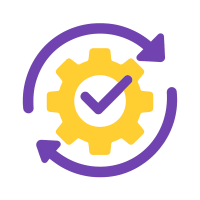 Tolerance Management:
Tolerance Management:
As discussed earlier, true pharmacological tolerance to modafinil is minimal – studies show no need to escalate dose over many months12. However, some individuals feel like it’s less effective after a while. Here’s how to handle that:
- Stick to the lowest effective dose. Using 200 mg daily when 100 mg suffices might speed up subjective tolerance. If you start to feel diminishing returns, try reducing your dose for a bit. Some users report that dropping from 200 mg to 100 mg actually makes the effects more noticeable again.
- Take “Holidays.” A 1–2 week washout period can reset your sensitivity. One user noted that after near-daily use for a month, a two-week break made it feel like the first time again22.
- Avoid psychological crutches. Don’t assume you can’t be productive without modafinil. Schedule some key days off-drug to reinforce confidence in your natural baseline.
- Review lifestyle factors. Poor sleep, diet shifts, or excessive caffeine can mimic tolerance. Check your sleep, nutrition, exercise, and other supplements if modafinil feels weaker.

Finally, it’s worth noting a quirk: some users report that modafinil’s noticeable kick diminishes after a few uses (the novelty factor), but its core benefits remain – it’s just that you get used to the feeling of being very awake. As one forum member explained, “By month 2 I thought it stopped working – but actually I was still getting 2x more work done, I’d just normalized to that level of alertness.” Keep an eye on objective measures of your performance (how much you accomplish, etc.), not just the subjective “feel” of the drug.
Key Point: To maintain modafinil’s effectiveness, use it strategically, not habitually. Most biohackers find it doesn’t require increasing the dose over time if they respect off-days. By cycling intelligently and taking care of your overall health, you can enjoy modafinil’s cognitive benefits for the long haul without hitting a tolerance wall.
Stacking Modafinil with Other Nootropics
One of the biohacking mantras is “stacking” – combining compounds to achieve synergistic effects or to cover each other’s weaknesses. Modafinil, being a versatile cognitive enhancer, is often used as the cornerstone of a nootropic stack. However, because it’s already quite powerful alone, stacking should be done thoughtfully. Here we discuss popular modafinil stacks, their purposes, and best practices, along with sample stacks that real users have found effective.
 Guiding Principles for Stacks:
Guiding Principles for Stacks:
- Keep it simple, especially at first. Modafinil itself has a strong effect; adding too many other stimulants or nootropics can complicate things or increase side effect risks. Start with one or two additions, not five.
- Target a goal. Each component in a stack should have a reason. For example: adding L-theanine to smooth anxiety, or a racetam to boost memory, or choline to support neurotransmitters. Avoid redundant compounds (e.g., stacking modafinil with another strong stimulant like Adderall is generally unnecessary and risky).
- Mind the stimulation load. If you combine stimulants (like modafinil + caffeine + phenylpiracetam), be cautious – synergistic stimulation can cause jitters or blood pressure spikes. Balance excitatory substances with calming or neuroprotective ones (e.g., theanine, magnesium, antioxidants).
- Adjust timing. Some stack components might be taken later in the day or earlier than modafinil depending on their half-lives. E.g., caffeine might be timed to peak together with modafinil’s onset, while something like Ashwagandha (adaptogen) might be taken in the evening to smooth the comedown and support sleep.
Below are some popular stack combinations with modafinil, as reported in biohacker communities:
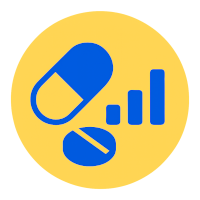 Sample Stacks with Rationale:
Sample Stacks with Rationale:
Modafinil + Caffeine + L-Theanine "The Productivity Trio"
This is a classic for those who want maximum alertness and focus. Modafinil and caffeine together can supercharge wakefulness (caffeine provides an immediate kick as modafinil ramps up). Adding L-theanine (100–200 mg) helps prevent jitters and anxiety, creating a smooth but intense focus. Use case: a long coding or writing session where you need to be ultra-sharp for hours. Caution: watch total caffeine; a moderate dose (e.g., one cup of coffee or 100 mg caffeine) is usually enough when combined with modafinil. Hydrate well since both modafinil and caffeine are diuretics.
Modafinil + Racetams + Choline "The Study Stack"
Racetams (like Piracetam, Aniracetam, or Phenylpiracetam) are nootropics known for enhancing memory, learning, and sometimes focus. Users often stack modafinil with a racetam to cover both energy (modafinil) and memory/cognitive processing (racetam). For example, Piracetam (1600 mg) with Alpha GPC (300 mg choline) is a common combo; the choline is added to prevent racetam headaches and support acetylcholine neurotransmitters. Modafinil in the mix keeps you alert to make full use of the racetam’s cognitive enhancement. Use case: heavy study days, researching or learning large volumes of info (where you need to retain and recall facts). User insight: One Redditor described taking 100 mg modafinil + 2 g piracetam + 300 mg CDP-choline in the morning, calling it "the ultimate exam prep stack – I was laser-focused and it felt like my brain was a sponge for information."11 Some also add Noopept (20 mg) or Aniracetam (750 mg) for creativity and reduced anxiety (Aniracetam in particular can have anxiolytic effects), especially useful if modafinil alone makes them a bit tense.
Modafinil + Phenylpiracetam "Dialed-In Drive"
Phenylpiracetam is a stimulating racetam (actually a derivative of piracetam with stimulant properties). Stacking it with modafinil can create a high-intensity focus and physical energy boost (phenylpiracetam also has some athletic endurance benefits). This combo is quite powerful – often used by people who have to push through mentally and even physically demanding work. Use case: perhaps a hackathon event or a day that blends mental and physical tasks. Caution: Phenylpiracetam builds tolerance quickly; it shouldn’t be used daily. Also both modafinil and phenylpiracetam are stimulatory, so add an L-theanine or magnesium to calm if needed. One blogger noted this stack made them "plow through work like a machine," but also led to needing good rest afterward.
Modafinil + Ashwagandha (or Rhodiola) "Stim + Soothe"
For those who get anxious or wired on modafinil, pairing it with an adaptogenic herb like ashwagandha (500 mg) or rhodiola (300 mg) can help maintain calm and support the adrenal system. These herbs may reduce cortisol and stress responses. Users say this combo keeps the productivity high but the stress low. It’s almost a biohacker’s version of "upper + downer" in a balanced way: modafinil provides the drive, ashwagandha smooths the ride. Use case: high-pressure workdays where stress management is as important as alertness.
Modafinil + Nootropic Multivitamin
Not a specific stack per se, but many users ensure they stack modafinil with a baseline nootropic stack that often includes: a B-vitamin complex, Omega-3 fish oil, Vitamin D, Magnesium, and maybe N-Acetyl Cysteine (NAC) or a general antioxidant. This is to support overall brain health and counteract any increased oxidative metabolism from working hard. For instance, Vitamin B6, B12 and folate support neurotransmitter synthesis; magnesium and potassium for neuron function; and antioxidants like NAC or Vitamin C to neutralize any oxidative stress. Think of it as “nutrient insurance” while your brain is in overdrive.
Modafinil Microdose + Other Nootropics
Some advanced users microdose modafinil (like 25 mg) in a broader stack that might include things like Lion’s Mane mushroom (for nerve growth factor support), Bacopa monnieri (for memory and stress reduction), and L-tyrosine (for dopamine support). The idea is modafinil provides a gentle lift that synergizes with these daily cognitive wellness supplements. This approach leans more on long-term cognitive health, using modafinil in tiny amounts more as a facilitator.
Example Stacks with Explanation:
• Stack A: “Focused & Calm” – Modafinil 100 mg (morning) + L-Theanine 200 mg (morning) + Omega-3 fish oil (with breakfast).
Purpose: Work or study day with intense focus needed, but want to stay calm.
Notes: Theanine takes the edge off any anxiety. Omega-3 supports brain function (DHA for neuronal membranes). Users report this stack gives a smooth concentration with no jitters – great for writing or coding for hours.12
• Stack B: “Extreme Productivity Day” – Modafinil 200 mg (7 AM) + Caffeine 100 mg (8 AM) + Piracetam 1600 mg (8 AM and 2 PM) + Alpha-GPC 300 mg (8 AM) + Magnesium 200 mg (10 PM).
Purpose: A marathon workday or exam prep day from early morning until late night.
Notes: Caffeine synergizes with modafinil in the morning to snap into action. Piracetam (with choline source Alpha-GPC) is taken for memory and learning; a second dose of piracetam in the early afternoon keeps its effects through evening (piracetam’s half-life is ~4-5 hours). Magnesium at night to relax and promote sleep. User experience: This is adapted from a student on Longecity who aced their exams with a similar stack, noting “my understanding and retention of the material grew, and modafinil kept my mind clear and active”23. Be sure to get adequate sleep afterward.
• Stack C: “Creative Flow State” – Modafinil 50 mg (microdose) + Aniracetam 750 mg + L-Tyrosine 500 mg + Bacopa Monnieri 300 mg + Coffee (1 cup) + L-Theanine 200 mg.
Purpose: Lighter stimulant load to encourage a flow state for creative work (design, writing, brainstorming) without over-focus that can stifle creativity.
Notes: Low-dose modafinil gives a gentle lift. Aniracetam is chosen for its reputed creativity and anti-anxiety effects (it modulates glutamate and dopamine in a way that can enhance mood and holistic thinking). L-tyrosine provides dopamine precursors to keep mood and motivation up. Bacopa is a classic Ayurvedic herb for memory and calm – supports the mind, though it’s more cumulative in effect. A single cup of coffee for a familiar spark, balanced by theanine to keep the vibe relaxed. This stack is aiming for a “in the zone but not wired” feeling. Users who find full 100-200 mg modafinil too focusing (to the point of being rigid) sometimes prefer this lower-dose stack to allow more divergent thinking.
Important: Always assess your individual reaction when stacking. Introduce one component at a time rather than all at once, so you know what’s doing what. Keep notes (see tracking section) on how each stack affects you. Many in the community refine their personal “go-to stack” through trial and error. And remember to consider the legality and safety of each component – for example, Phenibut is another substance some stack for social anxiety reduction, but it has its own risks (dependency). So, do thorough research on each ingredient in a stack.
Finally, a tip from experienced stackers: support your stack with lifestyle. Proper diet (especially protein for neurotransmitters), hydration, and breaks will amplify the effectiveness of any nootropic stack. A stack isn’t a substitute for common sense habits – it’s a force multiplier for them.
 Comparisons with Similar Substances (Modafinil vs. Others)
Comparisons with Similar Substances (Modafinil vs. Others)
Modafinil belongs to a unique class of wakefulness-promoters, but it often gets compared with various other stimulants and nootropics. Here we’ll compare modafinil to some similar or commonly related substances: armodafinil, adrafinil, and the racetam family, as well as briefly to classic stimulants like methylphenidate (Ritalin) or amphetamine (Adderall) for context. The table below provides a quick comparison:13
| Substance | Status/Legal | Typical Dose | Duration | Notable Features & Differences |
|---|---|---|---|---|
| Modafinil (Provigil) | Rx only (Schedule IV in US). Prescription in most countries; uncontrolled in some (e.g. OTC in India). | 100–200 mg in morning21. | ~12–15 hours (long half-life ~1517 h). | Wakefulness enhancer. Multi-modal mechanism (DAT, orexin, etc.). Low euphoria, low addiction risk. Gold-standard for narcolepsy and off-label cognitive boost. Can cause insomnia if taken late. |
| Armodafinil (Nuvigil) | Rx only (Schedule IV similar to modafinil). | 150 mg in morning (equivalent to ~200 mg modafinil). | ~15+ hours (slightly longer-acting). | R-enantiomer of modafinil. Essentially a refined modafinil – effects are very similar. Some users find it smoother or longer-lasting (less afternoon dip), others notice little difference. Possibly less needed for same effect. |
| Adrafinil | Unscheduled in many countries; sold as a “supplement” online (converted to modafinil in the body). Note: Not FDA-approved, but legal to buy in US. | 300–600 mg in morning (higher dose because it’s a prodrug). | ~1 hour to convert to modafinil, then effects 10–15 hours (slightly slower onset). | Prodrug of modafinil. Liver converts it to modafinil. Similar effects once converted, but adrafinil may elevate liver enzymes with frequent use (noted as a risk). Used by biohackers when modafinil itself is hard to obtain. Requires higher dosing. Generally cheaper, but slower and potential liver load.14 |
| Phenylpiracetam (Racetam) | Unscheduled; sold as nootropic supplement (grey market). Banned in sports (WADA prohibited). | 100–200 mg (morning or split doses). | ~5 hours (shorter; often taken 2×/day). | Stimulating nootropic. Increases dopamine/noradrenaline slightly, enhances physical stamina. Provides mental energy and focus but with tolerance if used daily. Compared to modafinil: phenylpiracetam hits faster but for much shorter duration. More likely to cause a “kick” feeling then wear off. Often stacked with modafinil for extreme focus, but not sustainable daily due to tolerance. |
| Piracetam/Aniracetam (Racetams) | Unscheduled; widely available. | Piracetam ~1600 mg ×2/day; Aniracetam ~750 mg ×2/day. | Piracetam 4–5 h; Aniracetam 2–4 h (short). | Classic nootropics. Not stimulants – they enhance memory, learning, neuroprotection. On their own, they don’t promote wakefulness (in fact aniracetam can be calming). Compared to modafinil: they won’t keep you awake, but they pair well with it to support cognition. Also, no insomnia issues with racetams.15 |
| Amphetamine (Adderall) | Rx only (Schedule II in US). | 5–30 mg (often split doses). | 4–8 hours immediate-release (extended ~12 h). | Traditional stimulant. Causes strong dopamine & norepinephrine release. Euphoric rush possible, higher abuse potential. More peripheral side effects (heart rate, blood pressure, jitteriness). Tolerance and dependence can develop. Adderall gives a pronounced focus and motivation boost but with a definite “speedy” feel and crash for many. Modafinil by contrast is smoother, with less physiological stimulation and virtually no crash. Adderall may improve reaction time and working memory more in some studies, but at the cost of anxiety/jitteriness in others. |
| Methylphenidate (Ritalin) | Rx only (Schedule II). | 10–40 mg (split or extended-release). | 3–4 hours (IR), up to 8 h (XR). | Classic ADHD medication. DAT and NET reuptake inhibitor (somewhat similar to modafinil’s dopamine effect but stronger). Increases focus and wakefulness, but can be jittery and appetite-suppressing. Higher abuse risk. Many find modafinil’s effects last longer and are gentler mood-wise, whereas Ritalin can cause ups and downs. Ritalin likely has more effect on working memory acutely (for ADHD), but modafinil’s broader mechanisms give it a wider cognitive enhancement range in healthy individuals. |
 Key Takeaways from Comparison:
Key Takeaways from Comparison:
- Modafinil vs Armodafinil: These two are very similar – think of armodafinil as a slightly refined version. If you have access to one or the other via prescription, you can expect nearly the same results. Some biohackers prefer armodafinil for its smoothness (no noticeable peak, just hours of steady focus). Others notice no difference or even prefer modafinil, claiming armodafinil can feel a bit “strong” initially. Practically, both are excellent for sustained wakefulness. If pulling an all-nighter, some prefer armodafinil for the extra longevity. But if one finds modafinil too long-acting (difficulty sleeping), they might actually prefer a smaller dose of armodafinil or just use modafinil and split the dose.
- Modafinil vs Adrafinil: Adrafinil is often used by those without a modafinil prescription since it’s sold as a research chemical. It works, but you need ~3–4× the dose and it takes longer to kick in (because your liver must metabolize it to modafinil). Chronic use of adrafinil could stress the liver; therefore, most recommend using it sparingly or getting liver function tests if using regularly. If you can get modafinil, you generally would choose modafinil over adrafinil for efficiency and less liver load. However, adrafinil is a viable alternative in a pinch or for experimentation. Users report adrafinil’s subjective effect is nearly identical to modafinil when the correct dose is used – just remember to dose higher and earlier.
- Modafinil vs Racetams: It’s a bit apples to oranges. Racetams (like piracetam) do not directly keep you awake. They more subtly enhance cognition (especially memory and neuroplasticity) and often need to be taken consistently for days or weeks for full effect. Modafinil is acute and powerful for alertness and focus. For a comprehensive nootropic regimen, many will use a racetam daily for its cumulative cognitive benefits and use modafinil on specific days for an extra boost. If your goal is purely wakefulness and productivity today, modafinil is far more noticeable than a racetam. If your goal is to improve learning ability or memory over time, a racetam shines there (modafinil doesn’t make you smarter long-term; racetams might aid learning processes). That’s why these are often complementary rather than competitors.
- Modafinil vs Amphetamines (Adderall): This is a common question for those familiar with ADHD meds or who have tried Adderall for studying. Modafinil’s advantages are: much lower abuse potential, gentler physiological impact, and longer stable duration without a harsh crash. It won’t give you the euphoric “wired and motivated and maybe a bit high” feeling that amphetamines can sometimes induce – for some, that’s a downside (they like the stimulant buzz), but for most biohackers it’s a big plus (you get work done without feeling “on drugs”). Amphetamines are very effective focus drugs, arguably stronger on a per-dose basis for forcing focus and motivation, but they carry more risk (tolerance, addiction, side effects like increased heart rate, blood pressure, anxiety, and sleep disruption). Modafinil is often described as “90% of the focus benefits with 10% of the side effects” in comparison. One study noted modafinil didn’t improve working memory in healthy people, whereas amphetamine sometimes does, but modafinil improved executive planning where amphetamine might just cause over-focus on wrong things725. Also, modafinil won’t typically disturb your personality or cause the emotional flattening some get on Adderall. For non-ADHD individuals just seeking cognitive enhancement, modafinil is generally the preferred choice due to its safety profile.
- Modafinil vs Methylphenidate (Ritalin): Ritalin is shorter-acting and can be more jittery. It spikes focus for a few hours, modafinil sustains it for the whole day. Many students who have tried both say Ritalin is like a sudden zoom that can sometimes cause a crash, whereas modafinil is a smooth ride. However, Ritalin can be better if you only need a couple of hours of extreme focus and then want it out of your system (e.g., taking it late afternoon to study a bit – you couldn’t do that with modafinil or you’d be up all night). Ritalin also tends to suppress appetite more and can cause more tension or mood swings. For a biohacker without ADHD, modafinil is usually the go-to over Ritalin for fewer downsides.
In summary, modafinil fills a niche: long-duration wakefulness and cognitive enhancement with low abuse risk. Armodafinil is an equivalent alternative. Adrafinil is a workaround to get modafinil’s effects with a legality trade-off (and some liver considerations). Racetams are a different toolkit – great for memory and brain health, but not directly comparable for alertness. And compared to conventional stimulants, modafinil offers a kinder, gentler way to stay sharp – you maintain a very high level of function without feeling too “drugged” or crashing afterward2. That’s why the military has researched modafinil as a replacement for amphetamines in pilots, and why many professionals prefer it for sustained mental marathons.
This visual reinforces that modafinil’s wake-promoting power is more sustained than caffeine’s, aligning with biohackers’ reports that “a single modafinil dose feels like an all-day energy”. (Of course, modafinil and caffeine are often combined for an even stronger effect, but pure caffeine will not keep you as steady through the 4:00 AM mark as modafinil can.)
 Personal Tracking Strategies for Modafinil Use
Personal Tracking Strategies for Modafinil Use
One ethos of biohacking is “self-quantification” – basically, measure it so you can manage it. If you’re incorporating modafinil into your cognitive toolkit, it’s wise to track certain variables to understand how it’s affecting you and how to optimize your regimen. Here we outline strategies using self-assessments, wearables, and journaling to make your modafinil experimentation data-driven.
Why Track?
Because subjective feelings can be misleading. On modafinil, you might feel invincible and assume you got twice as much done – but did you really? Conversely, you might feel a bit off one day and blame modafinil, when maybe you actually just didn’t eat enough. Tracking helps distinguish correlation vs causation and ensures you’re getting net positive results (and catching any negatives).
What to Track:
- Cognitive Performance: Memory, attention, processing speed, creativity.
- Productivity/Output: Tasks completed, quality of work, time spent in deep work.
- Physiology: Sleep quality, heart rate, blood pressure, any side effect symptoms (headaches, mood changes).
- Mood & Motivation: Your subjective mood, stress levels, and motivation on vs off modafinil.
- Usage Patterns: Dosage, frequency, and context (e.g., what you did on modafinil that day).
Cognitive Self-Assessments:
- Reaction Time Apps/Games: Tools like Human Benchmark reaction test or the Psychomotor Vigilance Task (PVT) on a smartphone can measure your reaction speed. Try doing a reaction test on a normal day and on a modafinil day, preferably at the same time of day, to see if there’s improvement (many find slightly faster reactions and less variability on modafinil). This aligns with research showing modafinil keeps reaction times stable during fatigue.
- Memory Tests: There are online memory tasks (like n-back games, word recall tests, or Lumosity/CogniFit exercises). You could do a short-term memory quiz (like memorize 20 words and recall) with and without modafinil. Some biohackers use Dual N-Back training scores as a proxy for working memory/attention; they report higher N-back levels attained on modafinil.
- Attention/Focus Metrics: You might time how long you can read or work on something without losing focus. For example, note the time when you first get antsy or distracted. On modafinil, you might find you can go much longer. There are also Stroop tests or Go/No-Go tasks available online that measure attention and impulsivity – doing those in different states could be informative.
- Subjective Cognitive Rating: Simply rate yourself daily on a few metrics: e.g., “Focus: 1-10, Memory: 1-10, Mental clarity: 1-10, Creativity: 1-10.” Over weeks, see patterns emerge. Perhaps you notice creativity is a tad lower on modafinil (some do feel less random creativity), or that focus is consistently near 10/10 on modafinil days versus 7/10 normally.
 Productivity Tracking:
Productivity Tracking:
- Time Tracking: Use a tool (or a good old spreadsheet) to log how many hours of deep work you accomplish. Apps like RescueTime or Toggl can automatically track time spent on productive vs distracting activities on your computer. Many modafinil users report a drastic shift: far less time on social media or random web browsing, more time in IDEs or Word documents. Quantifying this can validate that modafinil is actually reducing procrastination. For example, you might see that on modafinil you spent 2 hours on social media all week vs 8 hours on a non-modafinil week.
- Task Completion & Goal Progress: Keep a journal or to-do list and mark off tasks done each day. You could measure “tasks completed” or an output metric (e.g., words written, code commits made, pages studied). Comparing your output on modafinil days versus off days can be very telling. If you consistently double your output on modafinil, that’s valuable data (and also justification for when you choose to use it).
- Quality of Work: This one is harder to quantify, but you could, for instance, later review work done on modafinil vs off and rate it for quality. Some people worry modafinil might make them work faster but not better – if you have a way to evaluate quality (like test scores, peer review feedback, bug counts in code, etc.), track those. Often, modafinil’s heightened focus also reduces errors (as vigilance is higher), but it’s good to confirm that.
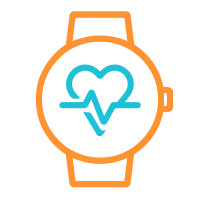 Wearables & Bio-Metrics:
Wearables & Bio-Metrics:
Many biohackers use devices like fitness trackers, smartwatches, or rings (Oura Ring, Fitbit, Apple Watch, etc.) to gather data. Here’s what to look at:
- Sleep Metrics: Use a sleep tracker to monitor how modafinil affects your sleep quality and patterns. Compare nights after taking modafinil vs normal nights. You might see, for example, reduced total sleep time or less deep sleep on days you took it (especially if taken too late). Ideally, with proper scheduling, your sleep duration and sleep stages shouldn’t suffer much – tracking can verify if you’re managing that well. If you see your sleep score tanking on modafinil days, you may need to adjust dose or timing.
- Heart Rate & HRV: Modafinil can raise your resting heart rate slightly. Your wearable can tell you your resting heart rate (RHR) each day. If you notice your RHR is 5–10 bpm higher on modafinil days, that’s expected to a degree (due to increased wakefulness and metabolism). Heart Rate Variability (HRV) is another metric – lower HRV can indicate stress on the body. Check if your HRV drops on modafinil days (some report a small decrease). If the drop is significant, consider incorporating more relaxation in the day or reducing other stimulants.
- Blood Pressure: If you have a BP cuff or your smartwatch can estimate it, measure blood pressure in the afternoon on and off modafinil. Hopefully it stays in normal range, but tracking ensures you catch any concerning elevations, especially if stacking stimulants.
- Activity Levels: Interestingly, some find they move less on modafinil because they’re glued to their chair working. If you have step count data, see if modafinil days are more sedentary. If so, you might proactively schedule short walks to avoid being immobile all day (good for health and actually for focus too).
- Body Temperature: A few people report feeling slightly warmer on modafinil (due to increased metabolism). If you track body temp or notice increased sweating, note that. It’s usually minor, but good to be aware in case you’re doing physical activity – stay cool and hydrated.
 Journaling Methods:
Journaling Methods:
Keeping a nootropics journal is highly recommended. In your journal (digital or analog), record entries like:
- Date and time of dose (e.g., “Jan 10, 2025 – 7:30 AM: 100 mg modafinil”).
- Other supplements/foods/meds consumed (to spot interactions).
- Your sleep last night (e.g., hours slept, quality).
- Your goals or plan for the day (this helps later to judge if goals were met).
- Subjective feelings at multiple points (morning, midday, evening): energy level, mood, focus, any side effects (headache, anxiety, etc.).
- Achievements or output: list what you accomplished, any breakthroughs or problems.
- Retrospective summary: at day’s end or next morning, write a short summary: “Felt extremely focused from 8–4, slight headache at 2 PM resolved with water. Got 3 reports done. Felt a bit zoned out socially in the evening. Overall 8/10 productivity.”
By reviewing your journal over weeks, patterns emerge. You might find for example that 50 mg gives you 5 hours of good focus with zero side effects, whereas 150 mg gives 10 hours focus but causes late-night insomnia – thus you might decide the trade-off isn’t worth it on regular days and save high doses for special crunch times.
 Specific Tools:
Specific Tools:
- Use spreadsheets or apps like Notion, Evernote, or Obsidian to log data and even graph certain variables. Some biohackers create a spreadsheet with columns for “Date, Dose, Hours Slept, Focus (1-10), Productivity (1-10), Notes” and fill it daily.
- Mood tracking apps (e.g., Daylio) can let you log mood with tags like “took modafinil” to later filter and see average mood on modafinil vs off days.
- Apple Health/Google Fit can aggregate data from wearables; you might add notes on days you took modafinil to those logs for context.
- If you’re statistically inclined, you can even do a little A/B testing: treat modafinil days vs non-modafinil days as two groups and compare average performance metrics. (For the truly geeky, tools like the Quantified Mind platform used to allow A/B experiments on cognitive tests with and without a nootropic).
One thing to be cautious of: don’t over-optimize trivial metrics. The point of tracking is to ensure modafinil is helping you achieve your real-world goals (better work/study performance, etc.) without harming your health. It’s easy to get lost in the data. Keep perspective – if all signs point to positive outcomes (you feel good, accomplish more, and have no health red flags), you probably don’t need to micromanage every metric. Conversely, if something feels off, the data can help pinpoint why.
Example Personal Tracking Routine:
A biohacker might use an Oura Ring for sleep and HRV, a Pomodoro timer for productivity, and a simple journal. They note that on modafinil days they reliably get +2 hours productive time, their Oura sleep score drops from 88 to 82 (slightly lighter sleep), HRV drops 5%, and RHR is 3 bpm higher. All within acceptable range, and their output is higher, so they judge the trade-off worth it. However, they might also notice they tend to skip workouts on modafinil days (because they work for longer) – thus they plan to integrate at least a short workout to not lose fitness progress. This kind of insight is invaluable for balancing performance and health.
In essence, treat yourself as an experiment. Measure, don’t guess. Over time you’ll dial in the exact routine that gives you peak results with modafinil, and you’ll have the numbers to back it up.
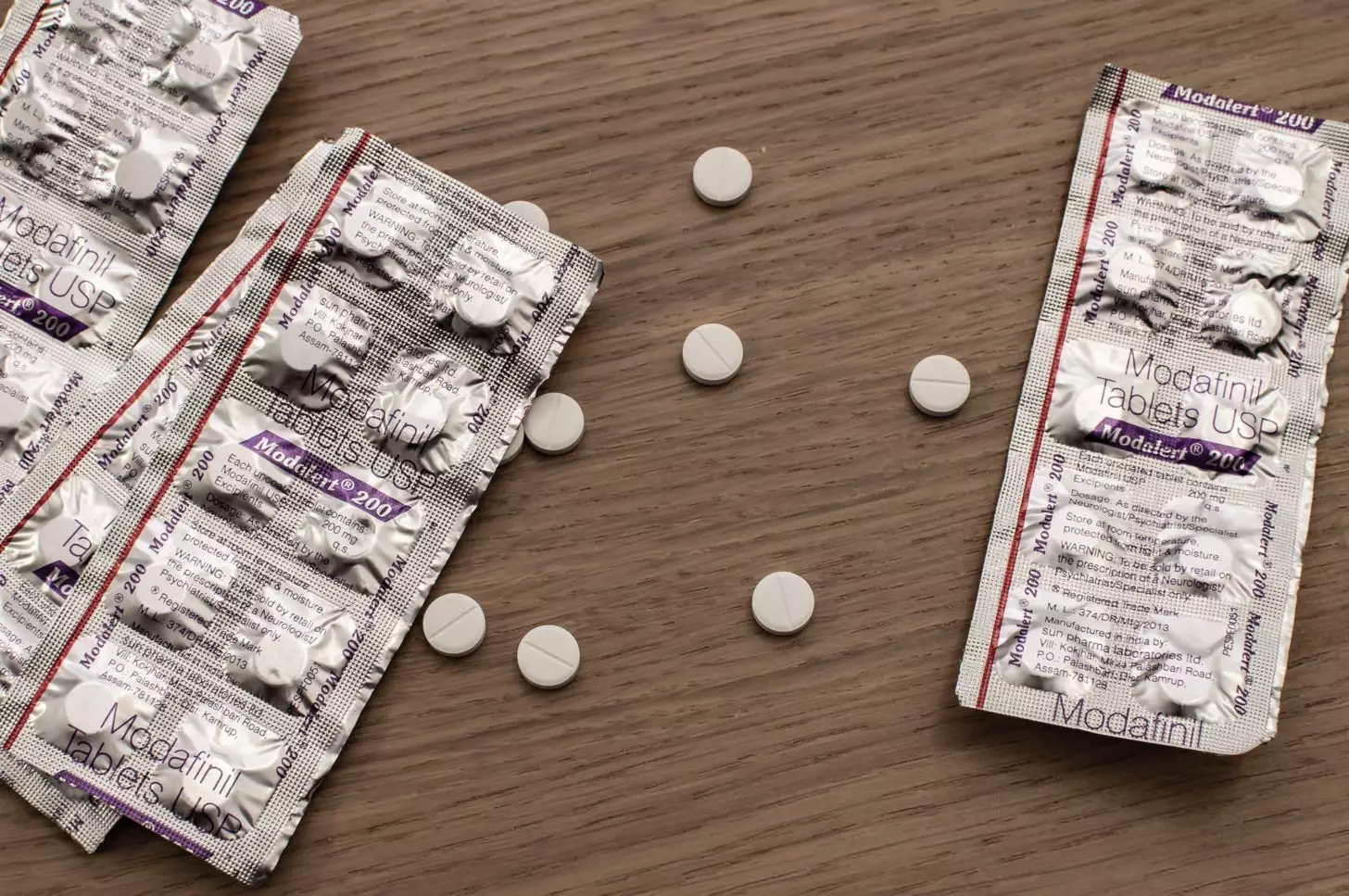
Tips for Achieving Flow States and Peak Productivity
Modafinil can set the stage for productivity, but reaching a flow state – that deep, energized focus where you lose track of time – requires more than just popping a pill. Here we’ll cover techniques and tips to help you leverage modafinil to its fullest, blending it with flow-enhancing practices for peak performance. Think of modafinil as a powerful engine; you still need a good driver and a clear road to really fly.
Set Clear Goals and Intentions:
Before you even take modafinil, define what you want to achieve while on it. Because once it kicks in, you’ll have a ton of drive and focus, and you want to channel that into the right tasks. Biohackers often emphasize doing a morning planning ritual on modafinil days:
- Write down your top 3 priority tasks for the day.
- Break work into structured blocks (e.g., “9–11 am: Finish project report; 11–11:15 am break; 11:15 am–1 pm: Data analysis on X” etc.).
- If you have creative tasks, outline them first. If analytical, gather all needed info ahead.
Having a roadmap prevents the scenario of being super focused but on something low-priority (like obsessively organizing your email folders – which modafinil can make oddly enjoyable). A common community tip: “Don’t let the drug decide what to do – decide beforehand.” This way, when the clarity hits, you dive straight into meaningful work.
Optimize Your Work Environment:
A distraction-free, ergonomically comfortable environment is key to flow. On modafinil, you might be less prone to distraction, but you’re not immune. Take time to:
- Clean up your workspace before starting (modafinil actually makes organizing pleasurable, but do that briefly then get to work).
- Use noise-cancelling headphones or ambient noise if sound distracts you. Many like to listen to instrumental music or binaural beats to maintain focus (modafinil can make music sound deeply engaging, so choose something that keeps you in the zone without lyrics).
- Turn off notifications, silence your phone, and use website blockers on known distraction sites (though many report they don’t even feel the urge to check Facebook on modafinil, it’s still wise to block temptations).
- Have necessary materials at hand (water, coffee/tea, snacks, notes) so you don’t break flow to fetch things.
Use Productivity Techniques:
Modafinil can extend your attention span, but using structured work techniques helps avoid burnout and maintain high output:
- Pomodoro or Ultradian Rhythms: Many users find doing 90-minute work blocks with 5–10-minute breaks (or 50/10 Pomodoro cycles) extremely effective on modafinil. You might feel like you can just power through without breaks – but micro-breaks help rest your mind and can even spur creativity for the next session29. One trick is to physically stand up, stretch, and look away from screens during breaks – because modafinil can make you hyperfocus, you have to will yourself to pause, but you’ll often return to work with fresh momentum.
- Deep Work Scheduling: Protect large chunks of your day for deep work tasks and cluster meetings or shallow tasks outside of that. On modafinil, you want to capitalize on those prime hours for challenging cognitive work. If possible, schedule any routine or social tasks for later in the day when the modafinil is tapering.
- Flow Triggers: According to flow researchers (like Steven Kotler), flow is triggered by things like clear goals, immediate feedback, and slightly risky or novel challenges. Incorporate this into your work: set clear micro-goals (“write 500 words in the next 30 minutes”), use timers or progress trackers for feedback, and push yourself to tackle tasks at the edge of your comfort zone (modafinil gives confidence to do that). The drug’s pharmacological push combined with these psychological triggers can really launch you into the flow channel.
Stay Hydrated and Nourished:
Physical needs strongly affect mental performance. As mentioned, modafinil suppresses hunger and thirst signals. Plan snack and water breaks. Some users set a timer to drink a glass of water every hour. Use your short breaks to have a few nuts, dark chocolate, fruit, or a protein bar – something to keep blood sugar stable. This prevents energy dips and keeps your brain fueled (brain needs glucose!). A dehydrated or calorie-deprived brain can’t achieve flow as well, modafinil or not.
Manage Stress and Overfocus:
- Breathing exercises: A few deep belly breaths periodically, or the 4-7-8 breathing technique, can release tension. This is great during short breaks to reset.
- Micro-meditations: Some biohackers incorporate 5-minute mindfulness sessions during the day. This might sound counterintuitive on a stimulant, but it can train you to maintain calm focus rather than jittery focus. Even simply closing eyes and focusing on breath for a couple minutes can recentre your mind if it starts racing.
- Theanine or Soothing Teas: If you didn’t already include L-theanine in your stack, having a cup of green tea (with its natural theanine) or herbal tea like chamomile by late afternoon can smooth the tail end of modafinil’s effects, helping you wind down gently while still maintaining concentration. A calm mind sustains flow longer.
Utilize the “Flow” Feeling for Enjoyment:
A key aspect of flow is that the activity becomes intrinsically rewarding. Modafinil by itself makes work less painful, but you can amplify enjoyment by turning work into a game or challenge. For example, set a personal record to beat (“Can I debug this code in under 30 minutes?” or “How many flashcards can I review in an hour?”). The positive feedback loop of modafinil (which often gives mild dopamine satisfaction for completing things) combined with gamified challenges can elevate your engagement to true flow, where the process itself feels gratifying.
Avoid Multitasking:
While modafinil can give a sense of mental superpower, multitasking is still generally detrimental to flow. It might allow you to context-switch with less drop in performance than usual, but you’ll achieve deeper immersion by focusing on one task at a time. So resist the temptation to juggle. If ideas or “remember to do X” thoughts pop up (which can happen since modafinil makes your mind active), jot them down on a notepad and continue the main task, rather than shifting focus immediately.
End-of-Day Transition:
Achieving a flow state is great, but you also need to exit work mode eventually. Modafinil can make your brain want to keep going.
- Plan a hard stop ritual: decide that at 7 PM, you’ll wrap up work, take a walk outside or do a workout to physically signal the shift, then have dinner.
- Engage in exercise: exercise helps burn off residual stimulation and produces endorphins that smooth out any potential comedown. A 20-minute run or weight session at the end of a modafinil-fueled day can both enhance your fitness and ease your transition to evening relaxation. Just not too late at night, to avoid sleep interference.
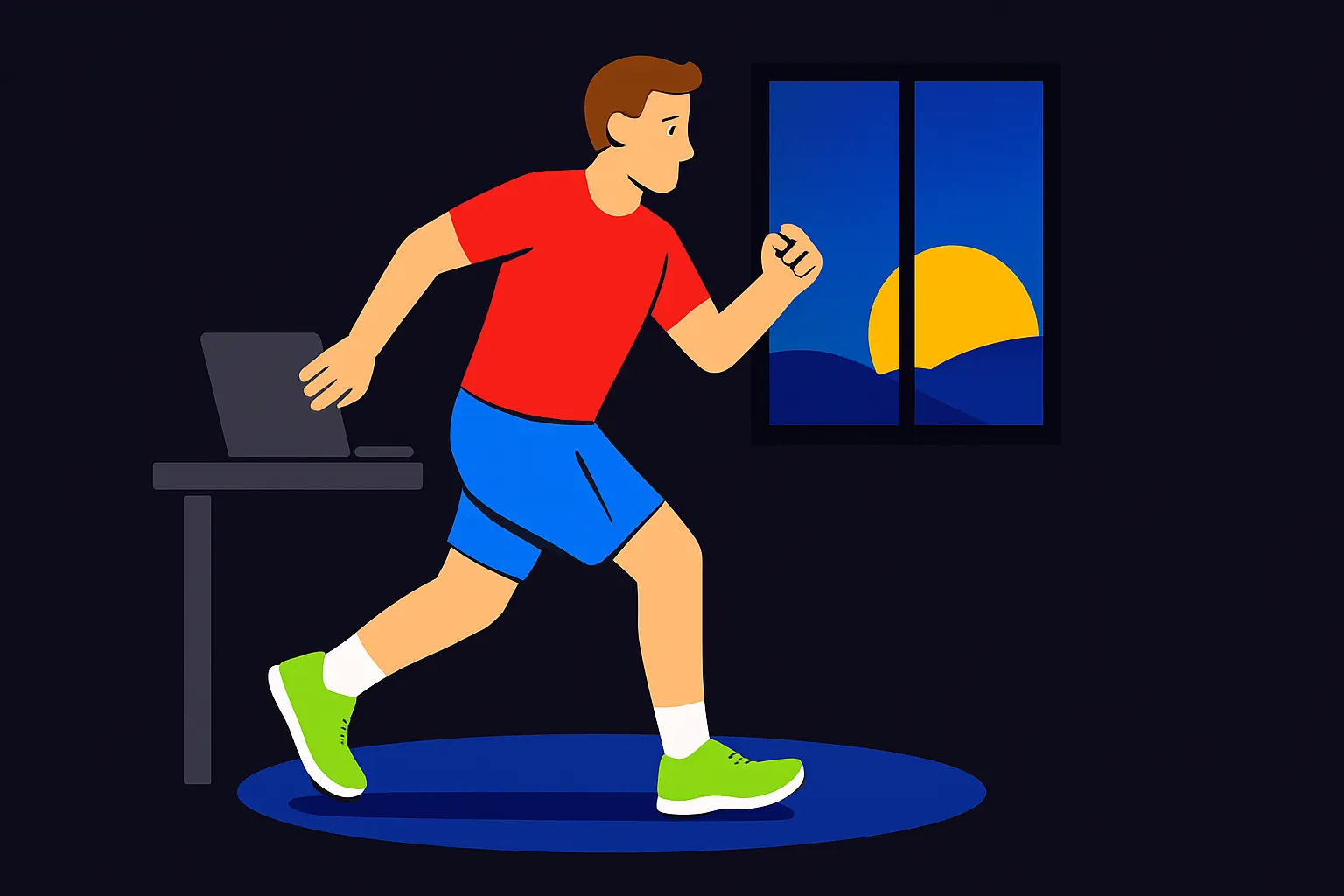
Sleep and Recovery:
Peak productivity isn’t sustainable without quality rest.
- Practice good sleep hygiene: when it’s time to sleep, minimize screens/blue light, keep the room cool and dark, maybe use a bit of melatonin if needed.
- Track your sleep and adjust behavior accordingly.
- The day after a heavy modafinil day, consider taking a break from stimulants to let your brain reset—perhaps do lighter work or creative brainstorming off stims.
- This cycle of push and recovery will keep you performing at high levels without burnout.
Flow in Non-Work Activities:
Interestingly, modafinil can also be used to achieve flow in things like workouts, lengthy hikes, or even creative hobbies. If you plan a modafinil day on a weekend project (say writing a novel chapter or learning a programming language for fun), apply the same structure: clear goal (finish a chapter), environment (cozy desk or library), maybe music to match the activity (some like lo-fi beats for writing, for example), and dive in. Many report that modafinil can help enter flow even in learning or skill practice contexts by reducing the frustration or boredom barriers. Just be careful not to turn purely recreational time into always “modafinil time,” as it’s good to let yourself relax too – balance is key in biohacking.
Listen to Your Mind and Body:
Ultimately, achieving flow is personal. Pay attention to what conditions helped you get in the zone. Maybe you find that starting the day with a bit of reading or inspiration (like 10 minutes of a motivating book) sets the right mindset. Or that working in a public quiet space (like a library or coworking space) puts you in a flow because of ambient people (the social facilitation effect). Others may find isolation at home is best. Modafinil will amplify your pre-existing tendencies, so shape those tendencies in your favor.
Community Wisdom for Flow:
Some biohackers share their flow “protocols” on forums.
- Dose modafinil at 7am, quick 5-minute meditation, then tackle the hardest task of the day first. Once that’s done, they feel a sense of progress that propels them into flow for subsequent tasks.
- Another tip: Use the energy to build momentum. Start with a small, quick win (like clearing a few emails or doing a warm-up task) – the dopamine from checking off a task can kickstart flow for a bigger task next.
- Additionally, leveraging flow triggers like novelty or unpredictability can help – e.g., work in a new location or use a new technique to solve a problem, keeping your brain engaged. Modafinil makes you more willing to tackle new things (less mental resistance), which is perfect for entering flow, since flow thrives on slightly novel, challenging situations.
In conclusion, modafinil + good workflow practices = a formidable combination. By structuring your day, optimizing your environment, caring for your physical needs, and using psychological tricks, you can consistently tap into highly productive flow states. Many users describe their best modafinil days as almost euphoric – not because of the drug alone, but because being fully absorbed in meaningful work is inherently satisfying. The drug helps remove the mental roadblocks; you create the conditions to run free.
Closing Thoughts:
Modafinil is a powerful tool for cognitive enhancement, but it’s not a magic pill that does the work for you. The real “secret” of biohackers using modafinil successfully is that they combine it with discipline, self-awareness, and healthy habits. Used responsibly, modafinil can help unlock levels of productivity and learning that feel superhuman – you’ll have days where you’re in flow, crossing off tasks left and right, perhaps even finding work enjoyable in ways it wasn’t before. Yet, always remember to listen to your body, respect the need for rest, and treat modafinil as one component of a holistic approach to self-improvement. This guide has armed you with knowledge from both science and the trenches of user experience. With that, you’re equipped to experiment and elevate your performance – safely and smartly. Enjoy the journey, and may your endeavors be ever productive and enlightened!
References
- (1–3, 5, 14, 16–19, 21) Modafinil - StatPearls - NCBI Bookshelf. https://www.ncbi.nlm.nih.gov/books/NBK531476/
- (4) Modafinil: A Review of Neurochemical Actions and Effects on Cognition | Neuropsychopharmacology. https://www.nature.com/articles/1301534?error=cookies_not_supported&code=131a9828-2d58-46cd-98ec-c2b3f6133987
- (6–8, 15, 25) Review of ‘smart drug’ shows modafinil does enhance cognition | University of Oxford. https://www.ox.ac.uk/news/2015-08-20-review-%E2%80%98smart-drug%E2%80%99-shows-modafinil-does-enhance-cognition
- (9) Modafinil for cognitive neuroenhancement in healthy non-sleep-deprived subjects: A systematic review. https://www.researchgate.net/publication/282046520_Modafinil_for_cognitive_neuroenhancement_in_healthy_non-sleep-deprived_subjects_A_systematic_review
- (10–13, 22, 24, 27, 28) Modafinil · Gwern.net. https://gwern.net/modafinil
- (20, 23) Starting a new stack (Modafinil + piracetam + caffeine + L-theanine) : r/StackAdvice. https://www.reddit.com/r/StackAdvice/comments/b41pw3/starting_a_new_stack_modafinil_piracetam_caffeine/
- (26) Effects of modafinil and caffeine on Vigilance and Tracking test, psychomotor vigilance task, and Stanford Sleepiness Scale. https://commons.wikimedia.org/wiki/File:Effects_of_modafinil_and_caffeine_on_Vigilance_and_Tracking_test,_psychomotor_vigilance_task,_and_Stanford_Sleepiness_Scale.jpg
- (29) Don’t Cap Flow State: Extreme Hyperfocus - Forever Jobless. https://foreverjobless.com/flow-state-hyperfocus/